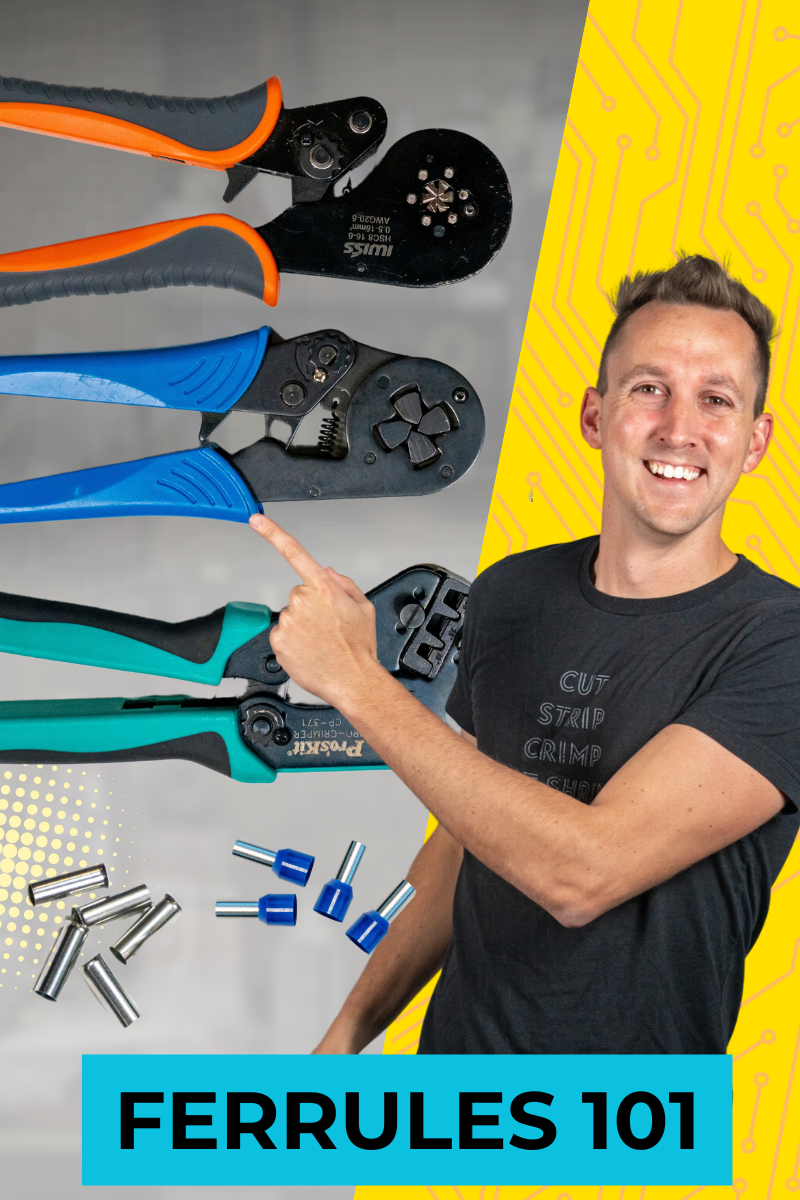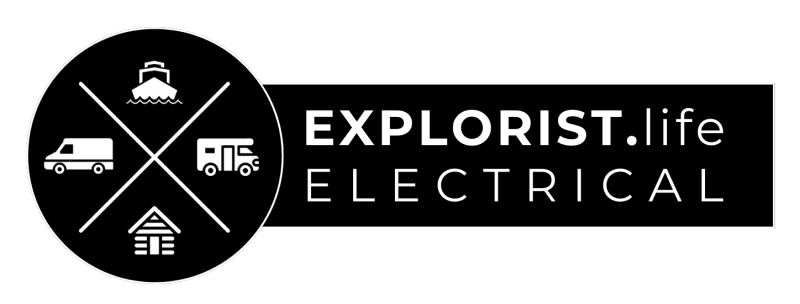
Ferrules can increase workmanship by making sure that all strands of wire actually make it into a screw terminal, but getting the correct shape of ferrule is up to the crimper used.

Ferrules 101 – VIDEO
[[COMING SOON]]
What is a ferrule?

A ferrule is a very thin piece of tin that is crimped onto the end of stranded wire that holds the strands together so that it’s easier to make sure that all strands of wire actually make it into the terminal which decreases the chance of a loose connection and therefore a melted terminal.
Ferrules come in two types: Insulated and Non-Insulated ferrules. Insulated ferrules have a nylon collar pre-attached to the ferrule, and non-insulated ferrules do not, and typically a bit of additional heat shrink would be added to clean up the end of the insulation and make your workmanship a bit nicer, although this isn’t always necessary, depending on the device being connected to.

It’s important to know, that in most cases, a ferrule is a tool designed to make your life easier and if it gets in the way or make the connection worse, they can generally be omitted; but I personally try to use them any time it makes sense which is why you see them in nearly all of our kits at shop.explorist.life
How to Size a Ferrule?
Ferrules are simply sized based on the wire size they will be crimped onto. A 10 AWG wire will get a 10 AWG ferrule. A 2 AWG Wire will get a 2 AWG Ferrule.

What is the best shape of ferrule?
All ferrules are round and they take their final shape based on the crimper used, but how do we know what crimper to use?
For this, we can simply look at the terminal we are connecting the wire to, see what shape of terminal it is, and use the appropriate crimper to make the same shape.
A Victron SmartSolar Charge Controller has a square screw terminal so it needs a square shaped crimp.

A 120V Distribution panel has round terminals, so it needs a round shaped crimp.
Which Ferrule Crimpers are best for what crimps?
I have three different types of ferrule crimpers, which covers all of the different shapes and sizes of ferrules that I may need to crimp:

These crimpers crimp a hexagon shape onto wires 6 AWG and smaller for round screw terminals.
These crimpers crimp a square shape onto wires 6 AWG and smaller for square screw terminals.
These crimpers crimp a trapezoid shape onto 6 AWG, 4 AWG, and 2 AWG wires for square screw terminals.
If you have a wire size and ferrule shape that falls outside of those sizes and shapes, you can probably just google around a bit for the proper tool; but these three crimpers I’ve shown will cover ALL ferrules that we include in any of our kits at shop.explorist.life.
How to Crimp Ferrules Onto Wire
To crimp a ferrule onto a wire, you simply:
- Put the ferrule onto the wire
- Put the ferrule into the crimper
- Squeeze the ferrule crimper handles
You may need to do this twice to shape the entire length of the ferrule.
This process is the same regardless of which crimper, ferrule size, or shape you are crimping.
Do Ferrules Increase Resistance?
Over the years, I’ve gotten some hate for teaching people about ferrules because some people think that ferrules increase resistance and they should not be used; specifically citing the Victron SmartSolar user manual on page 1 where it states:
In case of thicker strands the contact area will be too small and the resulting high contact resistance will cause severe overheating, eventually resulting in fire. See below figure for examples of what cable to use and not to use.
And what this is saying – is to not use solid core wire for a square terminal connection because the mismatch of shapes will decrease the surface area of the connection, increasing resistance, causing heat and melting.
But it’s important to know that a ferruled connection is NOT the same as solid wire.
A ferrule is SO thin that as long as the shape of the ferruled crimp is ‘close enough’ to the shape of the terminal; the terminal will shape the ferruled end even further when the terminal is torqued to spec.
A worst case scenario will illustrate this well:
- I’ve crimped a round ferrule onto this wire.
- Put it into the square terminal of a Victron Smartsolar Charge Controller
- Tighten the terminal to manufacturers recommended torque value
- Let it settle for a minute
- Re-torque
And then pull the wire out of the terminal and you’ll notice that the ferruled end has been re-shaped by the charge controllers terminal.
This isn’t how you should crimp ferrules; but illustrates the point that the terminal can mold the ferrule to some degree.
And yes… I have indeed double and triple checked with Victron, directly, that ferrules are good to use; which is why you have seen them on this channel for the last 4 years.

All of that said, If you are watching this video and are passionate about NOT using ferrules, here are two steps you can take:
- Keep it to yourself
- Do whatever you want in your own build.
And remember… a ferrule is a tool designed to make your life easier and if it gets in the way or make the connection worse, they can generally be omitted; but I personally try to use them any time it makes sense which is why you see them in nearly all of our kits at shop.explorist.life
Conclusion
Now we are going to be putting ferrules on a lot of wires throughout the rest of this academy, so be sure to bookmark this lesson for future reference and come back to it if you need a refresher because going forward, I’ll just assume that you now know how to crimp a ferrule.
